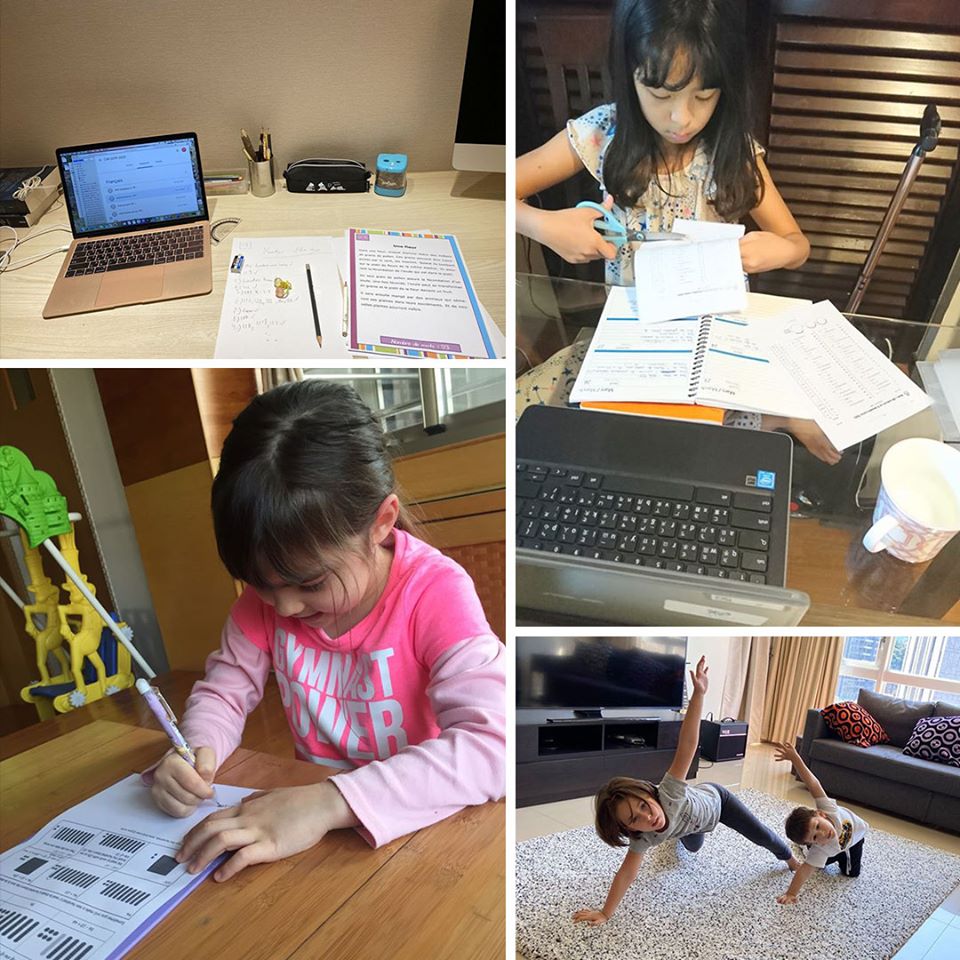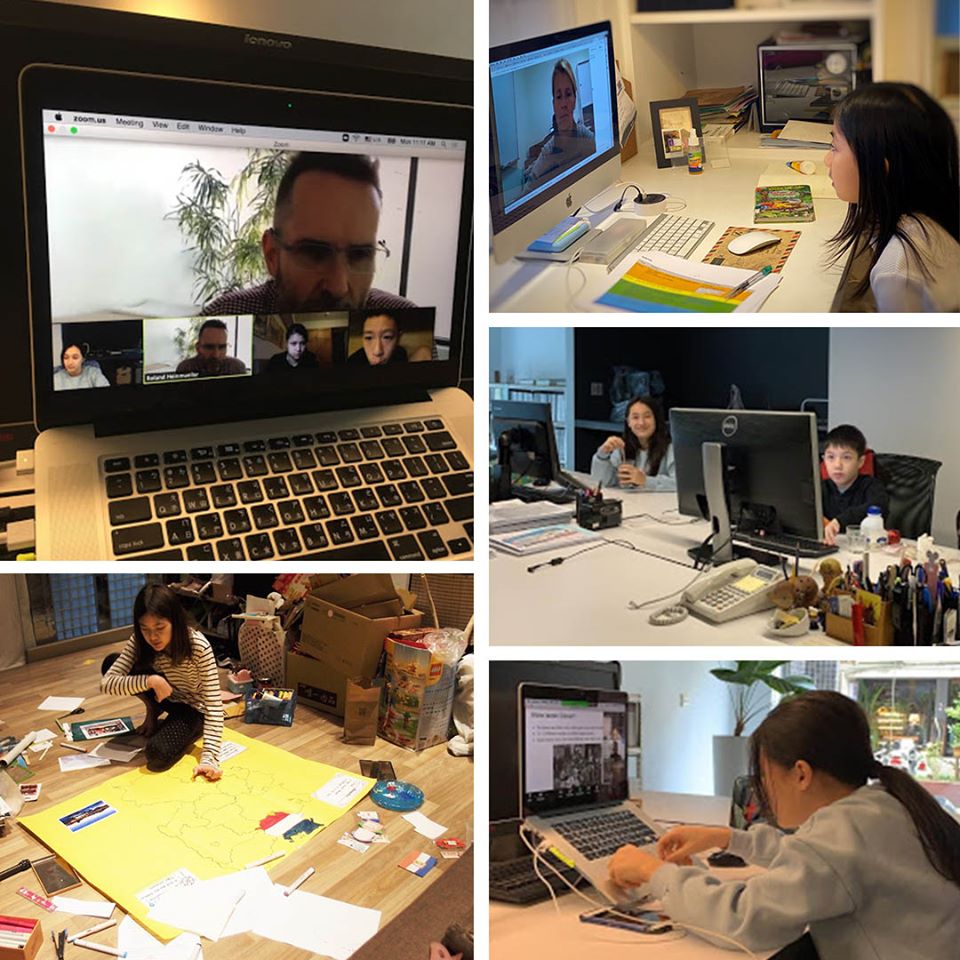Economy & Business
The promise and reality of online learning
While there are some exciting and valuable new platforms, tools and materials available, online learning is not going to replace the traditional classroom
By Duncan Levine

On the weekend of 14-15 March some European companies operating in Taiwan reported cases of employees that had been infected by the coronavirus. On top of this, students studying abroad had been returning home, many of which had contact with parents of students at the Taipei European School (TES) or their children. Then, Taiwan’s Centers for Disease Control (CDC) announced compulsory quarantine for those who had entered Taiwan as far back as 3 March, making it very difficult to track people who may be at risk. Therefore, out of an abundance of caution, the TES board announced that the school would be closed on 20 March, one and a half weeks ahead of the scheduled mid-term 10-day spring break. “All in all there were just too many risk factors,” said David Gatley, TES CEO. Given inevitable contact between the employees, some of whom had children at TES, and their friends and family, the risk was simply too great that children would become infected and spread the virus to their classmates.
The sudden closure necessitated the implementation of TES’s online learning programme for the second time this year, from 23 March until 1 April, following the first implementation of the programme in mid-February, which had followed the Ministry of Education’s mandatory extension of winter holidays by two weeks to prevent the spread of the virus on school and university campuses.
With many countries in the world now in lock-down to prevent the spread of the coronavirus, many schools have been closed, disrupting the learning programmes and schedules of school-going children and university students across the world. Educators and parents have been forced to resort to online learning to try to replicate or even improve upon real world learning programmes. But how is this mass online learning experiment working out?
The answer depends on a multitude of factors, ranging from the extent of preparedness in terms of technology, resources and training, the discipline and diligence of educators, parents and students as well as their psychological adaptability.
At the Taipei European School, although the learning curve has been sharp, most participants have described the experience as positive.
While the concept of online learning has seen rapid development, especially over the past 10 years, the coronavirus pandemic has been the first real test of how effective it is as an alternative to traditional classroom education.
In an era of mass disruption of traditional industries and business models, the education industry has been identified as one that is ripe for disruption. And just like companies such as Uber, Airbnb and WeWork promised to revolutionise the way we live and work and usher in the shared economy, the reality of online learning, while certainly offering value, falls somewhat short of the revolutionary hype promised by its most ardent promoters.
The past several years have seen the burgeoning of a number of online education start-ups and Taiwan is no exception. Companies such as taiwanlife.org, hahow.in, Yotta, Gogovisor and taiwanmooc.org offer a large array of courses, targeting children as well as adults on academic as well as lifestyle subjects. However, the market remains somewhat fragmented and fiercely competitive, making it difficult to assess which ones will be sustainable in the long term.
Squirrel AI, a Chinese education company, offers tutoring delivered in part by humans, but mostly by smart machines. The system is touted to be able to accurately assess a student’s ability and help them improve their knowledge and skills by focusing on bridging their knowledge gaps in a precise manner. Under its system, students take tests to assess their level and their results are recorded. The system then chooses learning content based on areas of weakness, which have been jointly designed by education and AI experts. Students then perform the required tasks and are given a report card setting out areas where they need help from a real tutor. According to the company, it has over 4,000 physical learning centres and four million students and has proven results showing that its students made significant improvements in learning outcomes, based on their test scores after being in the system for more than three months.
In Europe, the British company Century Tech has signed a deal to roll out an intelligent teaching and learning platform in 700 Belgian schools, and dozens more across the UK. Under its system, schools upload their content into Century’s system and then the platform breaks it down into micro-lessons. Students take a quick assessment to see what they know. Then, the system delivers lessons based on what needs to be worked on, and areas of weakness.
What is noteworthy about both Squirrel AI and Century Tech is that neither of them claims to want to replace real teachers. According to Squirrel AI, its system is aimed at helping teachers, not automating them out of existence. Priya Lakhani, the founder of Century Tech was quoted as saying that the company was founded to free up teachers from mindless administrative tasks, such as marking grades. By doing so, teachers can focus more on helping kids who need it, and devote more time to substantive class work. At the same time, kids interact with lessons that are more tailored to their ability and learning style.
Lakhani says the average time the AI platform is used is 20 minutes a week in primary schools and 40 minutes a week in secondary schools, to emphasize that the point is not to have kids spend more time in front of screens. Moreover, according to Century Tech, teachers report that the system frees up six hours a week for them, time which Lakhani says can be invested in the creative arts and physical education, which are often marginalized in favour of academics in service of students’ heavy testing burdens.
Big tech companies are also investing heavily in online education. For example, Google now offers “Classroom”, a free web service developed by Google for schools that aims to simplify creating, distributing, and grading assignments in a paperless way. The primary purpose of Google Classroom is to streamline the process of sharing files between teachers and students. Google Classroom combines Google Drive for assignment creation and distribution, Google Docs, Sheets and Slides for writing, Gmail for communication, and Google Calendar for scheduling. Students can be invited to join a class through a private code, or automatically imported from a school domain. Each class creates a separate folder in the respective user's drive, where the student can submit work to be graded by a teacher. Mobile apps, available for iOS and Android devices, let users take photos and attach to assignments, share files from other apps, and access information offline. Teachers can monitor the progress for each student, and after being graded, teachers can return work along with comments.
Another popular platform is Seesaw, which allows students to create, reflect, share, and collaborate. With Seesaw, students use creative tools to take pictures, draw and record videos. Teachers find or create activities to share with students. It also involves parents who can see their child's work and leave comments and encouragement.
There are also multiple communication applications to allow interactions between students and teachers in virtual classroom setting such as Google Hangouts, Zoom, FaceTime and Microsoft Teams.
With so many tools available, it sounds like utopia for online learning. Of course, the reality is somewhat more complicated.
For a start, there is the digital divide. Online learning only works if you have reliable electricity, modern devices and a fast internet connection. That puts it out of reach of many countries and even some communities in developed countries. Moreover, while there are a growing number of online communications applications and teaching materials, there is no off-the-shelf online programme that can simply be implemented that meets national curricula guidelines and requirements. This means that a lot of the burden of preparing, delivering and evaluating online lessons falls on teachers. Obviously, better-resourced schools are coping and adapting better than others with the sudden advent of online learning.
|
|
|
According to David Gatley, TES management had actually been thinking about online learning for about two years. All teachers had already been supplied with laptop computers while students had been supplied with devices for the purposes of online learning. Teachers had also received training on how to prepare and deliver online lessons and have been given a baptism of fire over the past two months that have honed their skills considerably.
Teachers are also sharing experiences. TES teachers meet one day a week for a joint planning session to coordinate what they are planning to do to ensure that they are covering the same ground and that all pupils are taught the same materials.
In terms of tools and methods, a number are being employed. The Zoom video conferencing platform, that allows teachers and students to interact in real time, had been used until recently when security concerns prompted the Taiwan government to ban its use in schools and government agencies. According to David Gatley, despite having implemented strict preventative measures and instructional protocols to secure online instruction, TES decided to stop using Zoom following the guideline of the Taiwan Ministry of Education and to pivot to Google Meet for the time being.
TES is making use of various programmes to teach subjects like maths and English and talking books. David Sinclair, Director of IT at TES, says that teachers had been trained in audit digital competencies and instructional design to ensure tasks are meaningful and to differentiate instruction and personalise the learning experience.
In terms of online platform tools, TES is using Google Classroom, for older students and Seesaw for younger students. Teachers have been trained in using shared google doc sheets and slides.
For the primary campus, the school day usually starts with a video conference session during which the teacher explains the plan and tasks for the day. After that, students have to write and submit various assignments and send them to the teacher for review. For the secondary campus, real time live lessons are conducted online following the routine timetables.
Online learning is no picnic for teachers. According to Gatley, the workload for teachers has become much heavier. Whereas they used to spend about 8 hours a day preparing and delivering lessons and marking homework, they now spend up to 12 hours a day, including giving feedback to students on their work.
Hopefully, as teachers gain more experience and build up their lesson plans, the workload will become more manageable. And, of course the first experiences of online learning have provided some valuable lessons. According to David Sinclair, Director of IT, the main lesson learnt so far was to be flexible and innovative.
For example, teachers actually set too much work for students to handle in the first week. They therefore adjusted the workload in the second week and managed to get the balance right and started more face to face interaction with students. In the third week they started getting more parents involved.
While the focus is on academic lessons, Gatley noted that they have also since added other lessons such as physical education and music, including singing.
In terms of challenges, many are the same as for traditional learning at TES. For example, some of the students in the British section, whose first language is not English, struggle to understand the teaching instructions or materials and have to be given additional language support.
Of course, as with all other programmes at TES, the aim is to strive to make continuous improvements. In this regard, TES has put in place a framework for soliciting immediate feedback from students and parents.
As for the future of online learning and whether or not it can ever replace the live tactile learning experience, both Gatley and Sinclair concur with sentiments expressed by online learning pioneers Squirrel AI and Century Tech. “Human communication is complex and face-to-face communication involves a lot of nuances that cannot be captured no matter how good online cameras and microphones are,” according to Sinclair. For this reason, he says, technology and online learning will never be able to properly replace the real classroom.
It is also a matter of human interaction. As social animals, human beings need actual interaction with other real people. This is essential to maintain our sense of wellbeing. As with all other human interaction, education is no exception.

